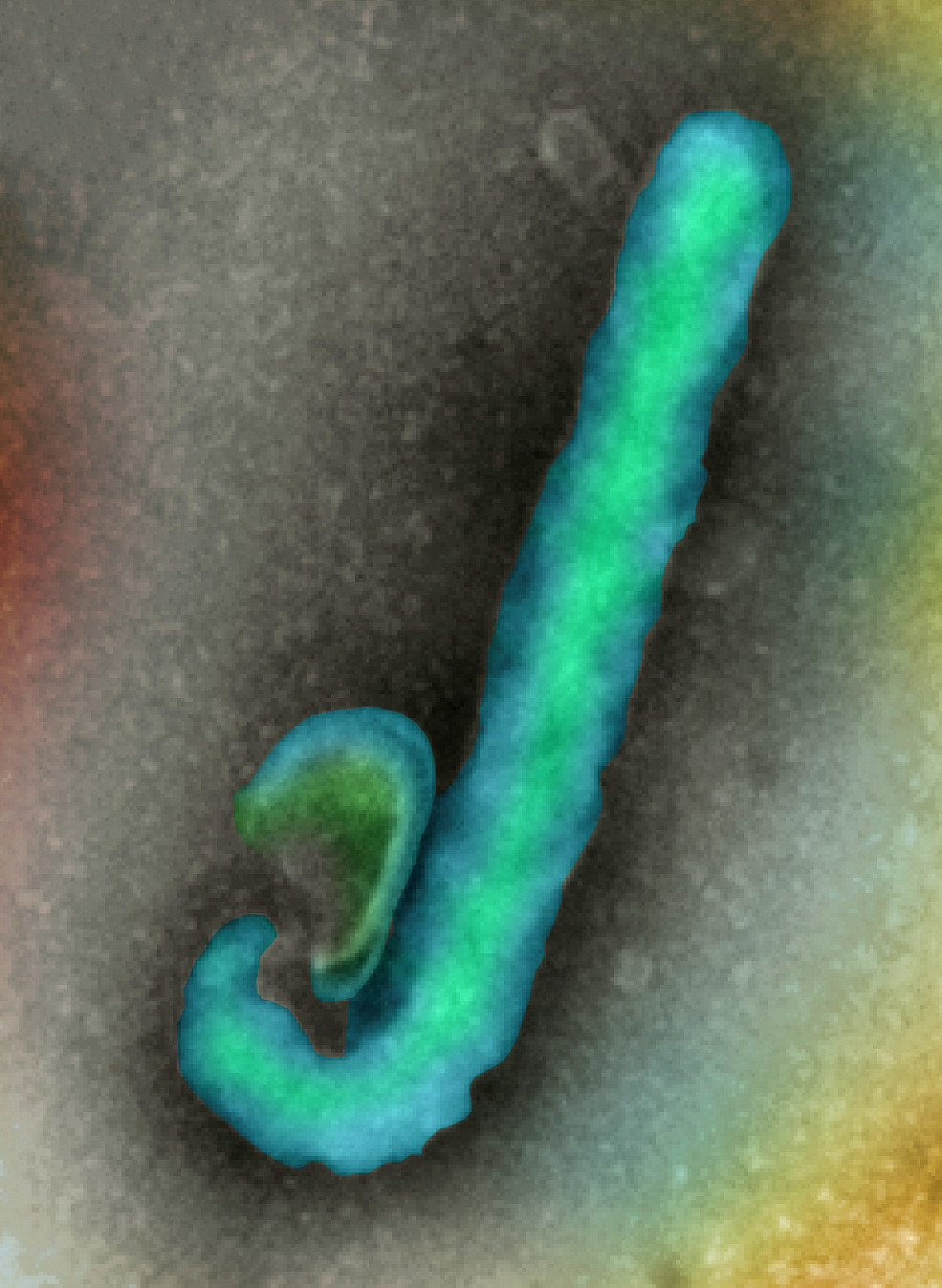 |
| Artificially colored photograph of the Reston Ebola virus Courtesy of CSIRO |
Ebola has a nasty history in Africa. According to the CDC, these viruses -- of which there are 5 known types -- have a mortality rate that ranges from 0 to 100 %, depending on the size of the breakout. That would not be so alarming and would be similar to the rates of less virulent diseases were it not for the fact that it has had mortality rates around 80 percent during breakouts that involved hundreds of people. There is no known cure and saving victims is a matter of chance. It is possible to give some supportive treatment, but it cannot reverse the course of Ebola. Therefore, the Reston Ebola outbreak was a shock to USAMRID and the CDC. Ebola in the United States is one of the scariest things an American expert in disease can hear.
Ebola viruses spread through contact with bodily fluids. Typically, that would mean it has some difficulty spreading. However, when it comes to Ebola virus, fluid is a huge concern. A person who is going through hemorrhaging leaves quite a trail of fluid in his or her wake. Nonetheless, it is still containable, given decent circumstances. The fear is that Ebola could go airborne, which would make it a potential pandemic agent. After reading "The Hot Zone" by Richard Preston, a non-fiction novel written in story form, this particularly interested me. The reason for this is that "The Hot Zone," which spends a lot of time on the Reston Ebola outbreak, mentioned that Reston ebolavirus was airborne.
The Ebola outbreak in Reston started with monkeys shipped from the Philippines. These particular monkeys were being held in a quarantine facility in Reston, awaiting shipment to labs in the U.S. It is standard procedure to lock up primates from other countries until researchers can be sure they carry no illness. Such was not the case with these monkeys. They started crashing and bleeding out. The man handling the monkeys did further quarantine measures, separating sick monkeys from seemingly healthy monkeys. Eventually, the illness started to scare him, so he sent a sample of blood to USAMRID. Researchers at USAMRID found the unthinkable in the blood -- Ebola virus.
Once it was ascertained that it was Ebola in the monkeys, USAMRID took over the quarantine facility. When it was discovered that Ebola was working its way through the air ducts to other rooms in the facility, euthanization of the entire population of monkeys was necessary. Another problem was that the monkey workers in the facility had been handling the monkeys with Level 4 biosafety precautions, which are necessary for the Ebola virus, according to the CDC. Participants in the euthanization and cleaning of the quarantine facility interviewed for "The Hot Zone" universally expressed a fear that they would catch the disease or it would spread. So close to an urban area, that was a real threat to the entire country.
Eventually the clean up was complete with no human infections that caused illness. This was odd, considering that human exposure was much higher than safety would dictate. The Reston ebolavirus was traced back to the Philippines, where monkey workers were found to have evidence of the virus in their blood. However, none of them was sick. It has since been assumed that Reston ebolavirus is somehow not dangerous to humans. It would be the first of the Ebola viruses to be such, though it is devastating to monkeys.
Reston ebolavirus is still a threat to humans. There have been more outbreaks in monkey facilities in the U.S. with no human illness. However, nearly all experts agree that there is not enough evidence to support the idea that humans cannot get sick from the virus. Furthermore, there is always reason to fear the evolution of any filovirus. If the Reston ebolavirus was able to harm humans and the evidence that suggested it was airborne is correct, that is a huge problem for the human race.
Sources
"The Hot Zone" by Richard Preston
World Health Organization, Ebola Reston Found in Domestic Pigs in the Philippines, retrieved 12/5/11, UPDATE: http://www.who.int/csr/don/2009_03_31/en/
No comments:
Post a Comment